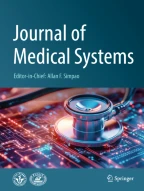Abstract
This paper focuses on the issue of extracting retina vessels with supervised approach. Since the green channel in the retina image has the best contrast between vessel and non-vessel, this channel is used to separate vessels. In our approach we are proposing a technique of using gray-level co-occurrence matrix method for composition of the retinal images. It is based on fact that the co-occurrence matrix of retina image describes the transition of intensities between neighbour pixels, indicating spatial structural information of retina image. So, we first extract the features vector based on specified characteristics of the gray-level co-occurrence matrix and then we use these features vector to train a neural network approach for the classification method which makes our proposed approach more effective. Obtained results from the experiments in DRIVE and STARE database shows the advantage of the proposed method in contrast to current methods. This advantage is evaluated by the criteria of sensitivity, specificity, area under ROC and accuracy. The result of such a conversion as the input vector of a multilayer perceptron neural network will be trained and tested. Although in recent years different methods have been presented in this respect, but results of simulation shows that the proposed algorithm has a very high efficiency than the other researches.
Similar content being viewed by others
References
Staal, J., Abr’amoff, M. D., Niemeijer, M., Viergever, M. A., and van Ginneken, B., “Ridgebased vessel segmentation in color images of the retina”. IEEE Trans on Medical Imaging 23(4):501–509, 2004.
Marín, D., Aquino, A., Gegúndez-Arias, M. E., and Bravo, J. M., A new supervised method for blood vessel segmentation in retinal images by using gray-level and moment invariants-based features. IEEE Trans. Med. Imag. 30(1):146–158, 2011.
Ricci, E., and Perfetti, R., Retinal blood vessel segmentation using line operators and support vector classification. IEEE Transactions on Medical Imaging 26(10):1357–1365, 2007.
Hoover, A., Kouznetsova, V., and Goldbaum, M., Locating blood vessels in retinal images by piecewise threshold probing of a matched filter response. IEEE Trans. Med. Imaging 19(3):203–210, 2000.
Thomos, N., Boulgouris, N. V., and Strintzis, M. G., Optimized transmission of JPEG2000 streams over wireless channels. IEEE Trans on Image Processing 15(1):54–67, 2006.
K. G. Goh, W. Hsu, M. L. Lee. “An Automatic Diabetic Retinal Image Screening System,” Medical Data Mining and Knowledge Discovery, Springer-Velag, 2000.
Haralick, R. M., Shanmugan, K., and Dinstein, J., “Textual features for image classification”. IEEE Trans. Syst. Man. Cybern. SMC-3:610–621, 1973.
Nissim, K., Harel, E., “A Texture based approach to defect analysis of arapefruits”, Proceeding IPDPS ’05 Proceedings of the 19th IEEE International Parallel and Distributed Processing Symposium (IPDPS’05) - Vol 01, 1997.
J. V. B. Soares, J. J. G. Leandro, R. M. Cesar, Jr., H. F. Jelinek, and M. J. Cree, “Retinal vessel segmentation using the 2D Gabor wavelet and supervised classification,” IEEE Trans. Med. Imag., vol. 25, no. 9, pp. 1214–1222, Sep. 2006.
C.A. Lupascu, D. Tegolo, E. Trucco, FABC: retinal vessel segmentation using AdaBoost, IEEE Transactions on Information Technology in Biomedicine, pp. 1267–1274, 2010.
X. You, Q. Peng, Y. Yuan, Y.-m. Cheung, J. Lei, Segmentation of retinal blood vessels using the radial projection and semi-supervised approach, Pattern Recognition, pp. 2314–2324, 2011.
G.B. Kande, P.V. Subbaiah, T.S. Savithri, Unsupervised fuzzy based vessel segmentation in pathological digital fundus images, Journal of Medical Systems, pp. 849–858, 2009.
F. Villalobos-Castaldi, E. Felipe-Riverón, L. Sánchez-Fernández, A fast, efficient and automated method to extract vessels from fundus images, Journal of Visualization, pp. 263–270, 2010.
S. Salem, N. Salem, A. Nandi, Segmentation of retinal blood vessels using a novel clustering algorithm (RACAL) with a partial supervision strategy, Medical and Biological Engineering and Computing, pp. 261–273, 2007.
J. Ng, S.T. Clay, S.A. Barman, A.R. Fielder, M.J. Moseley, K.H. Parker, C. Paterson, Maximum likelihood estimation of vessel parameters from scale space analysis, Image and Vision Computing, pp. 55–63, 2010.
Acknowledgments
The authors would like to thank to the editors and to the anonymous reviewers for their constructive comments.
Author information
Authors and Affiliations
Corresponding author
Additional information
This article is part of the Topical Collection on Patient Facing Systems
Rights and permissions
About this article
Cite this article
Rahebi, J., Hardalaç, F. Retinal Blood Vessel Segmentation with Neural Network by Using Gray-Level Co-Occurrence Matrix-Based Features. J Med Syst 38, 85 (2014). https://doi.org/10.1007/s10916-014-0085-2
Received:
Accepted:
Published:
DOI: https://doi.org/10.1007/s10916-014-0085-2
